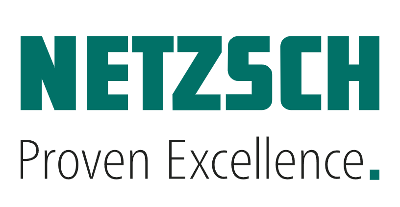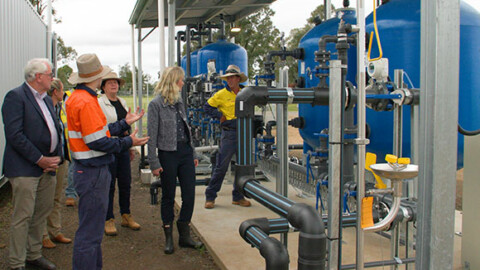By David Rozee, Managing Director, TriArk Pumps
Air Operated Double Diaphragm (AODD) pumps have a range of applications across various industries. Here, David Rozee shares the tips and tricks he’s picked up when it comes to maintaining AODD pumps.
AODD pumps are the real workhorses of the industrial pump world and are used in a wide range of industries. These include chemicals, food processing, paints, electronics, road construction, maintenance for industrial processes, electricity production facilities, food processing, wastewater and sludge processing, and mining.
They are self-priming, will run dry without doing any damage and use no electricity. Powered completely from compressed air, they are used in applications where electricity is not available or must not be used, such as hazardous or explosive situations or at remote sites.
AODD pumps are particularly versatile in being capable of pumping fluids from fluidised dry powder to shear-sensitive liquids, viscous liquids and abrasive slurries.
AODD pumps contain fewer moving parts than many other types of pumps and therefore require less maintenance, yet provide easy access to those parts that may need servicing.
Basic pump components

Figure 1. AODD pump schematic
AODD pumps benefit from their simplicity of operation. Figure 1 shows a schematic diagram of an AODD pump, where A & B are the diaphragms, 1-4 the ball valves and I and O the inlet and outlet ports respectively. The air valve is usually a shuttle valve to route the compressed air alternatively to each diaphragm. The movement of diaphragm A towards the middle of the pump generates a partial vacuum in the chamber.
This makes ball valve 1 close, while ball valve 2 opens as air pressure moves liquid from the inlet into the chamber. At the same time, diaphragm B compresses the volume in its chamber, which closes valve 3 and forces fluid past valve 4 and out through the outlet port. When the air valve drives back the movement of the diaphragms, fluid is pumped through the left hand side of the pump.
Since the diaphragms are fixed to the walls of the pumping chamber, there are no sliding seals in the pump. There are no shaft seals or packing boxes involved. There is a choice of materials for the pump body, diaphragms and ball valves, depending on the fluid to be pumped.
Diaphragms and balls are generally elastomer-based or manufactured from thermoplastic materials such as modified PTFE, where maximum chemical resistance is required. Discharge flow rates are adjusted by controlling the air inlet or the discharge flow, so no complicated control systems are required.
Preventative maintenance
AODD pumps are very reliable since they have very few moving parts and components that can wear. They compare very favourably with pumps that have close-fitting sliding or rotating mechanisms, where the passage of abrasive slurries, for example, can cause excessive wear to the moving parts of the pump.
This can lead to significant down-time and repair costs. These problems do not arise with AODD pumps since large internal volumes and flow through prevent clogging, with the size of solid particles that can be pumped related to the pump size.
Key factors to consider for preventative maintenance are:
- Diaphragm lifetime
- Compressed air quality
- Flushing of pumps after use.
The diaphragm is a dynamic seal that converts the pneumatic pressure on one side to a fluid pressure on the other (the material to be pumped). Although the differential air pressure across the diaphragm and corresponding internal stresses are lower in comparison with similar stresses in mechanically driven diaphragm pumps that use the diaphragm to generate pressure, the AODD pump diaphragms must flex through millions of cycles to do their work.
All diaphragm types will have a finite flex life and the use of a pump stroke counter allows the flex life to be monitored as a part of preventative maintenance good practice. Elastomer diaphragms are typically guaranteed for a flex life of approximately 20 million cycles and PTFE-based diaphragms for around 12 million cycles, but some PTFE diaphragms have been known to last 30 million cycles.
Although the pumps can run dry with no damage, diaphragm flex life can be reduced if the pump runs dry for extended periods of time.
Careful consideration should be given to the compressed air supply used. Air is drawn into the compressor from the atmosphere and will contain some moisture. This air expands rapidly inside the pump with the result that the water can freeze. The ice formed on the moving parts of the air valve can cause them to stick, causing the pump to stall. Although air valves are designed to minimise this possibility, it is good practice to make sure that the air is dried before it enters the compressor.
In addition, engineers frequently lubricate a compressed air line. This practice should be avoided due to the potential to contaminate the pumped fluid. There is an additional environmental benefit to using oil-free compressed air since no oil mist is vented into the atmosphere as well as the fact that there are also no costs associated with oil consumption or lubrication.
Since AODD pumps can be used for pumping such a wide range of fluids, consideration should be given to flushing the pump through after use, especially for fluids such as concrete, or glue, which will solidify in the pump if not removed after pumping is complete. Once a substance has solidified in the pump it needs to be completely stripped down for refurbishment.

Figure 2. Blagdon B50 AODD pump before and after refurbishment by Tri-Ark Pumps Ltd.
Maintenance and repair strategies
Since AODD pumps are used in such a wide range of applications and industries, individual users will have their own approach to maintenance and repair strategies. Uses can vary from the occasional emptying of a container using the pump as a scavenger, to 24/7 use on a critical production line. Although AODD pumps are easily dismantled for maintenance or diaphragm replacement, not all users will want to carry out their own maintenance or repair – they may prefer to return the pump to the supplier for refurbishment.
Most AODD pumps come with a manufacturer’s five year warranty (excluding consumable items) but often a pump returned under warranty will undergo a lengthy investigation by the manufacturer to decide the cause of the fault, and that could be very disruptive to a user. Some independent suppliers will offer a 5 year no quibble guarantee which avoids this lengthy process.
For pumps being used in critical 24/7 applications, having a spare pump that can be swapped in the event of a pump failure is essential. This may literally be a spare, or one being used in a different application that can be used at short notice.
The most comprehensive approach would be a three-pump strategy – one in use, and two spares. In the event of a failure, the damaged pump is replaced by a spare and returned for repair, still leaving a spare on site while the repair is carried out.
For companies who want to carry out their own repairs, an ‘airside’ repair kit can be provided which contains components such as ball valves, diaphragm valve seats etc. that are in contact with the pumped fluid, and a ‘dry side’ kit which contains items such as a pump shaft, o-rings, gaskets etc. For many years now, companies have sought to lower their overheads by holding less stock, so many end users may be reluctant to hold spares for their pumps.
Finally, the cost of repairs and refurbishment should be considered. In today’s ‘consumable society’, it is often cheaper to simply buy new rather than pay for a repair. In the world of AODD pumps, the rule of thumb is that pumps less than a 1/2” are generally not worth repairing.
David Rozee is the Managing Director of TriArk Pumps. Visit www.tri-ark.com.

















